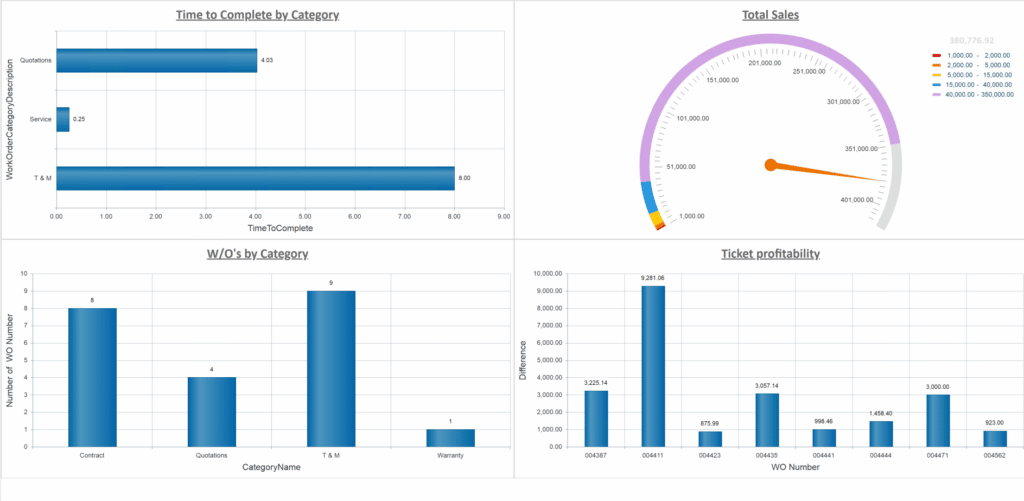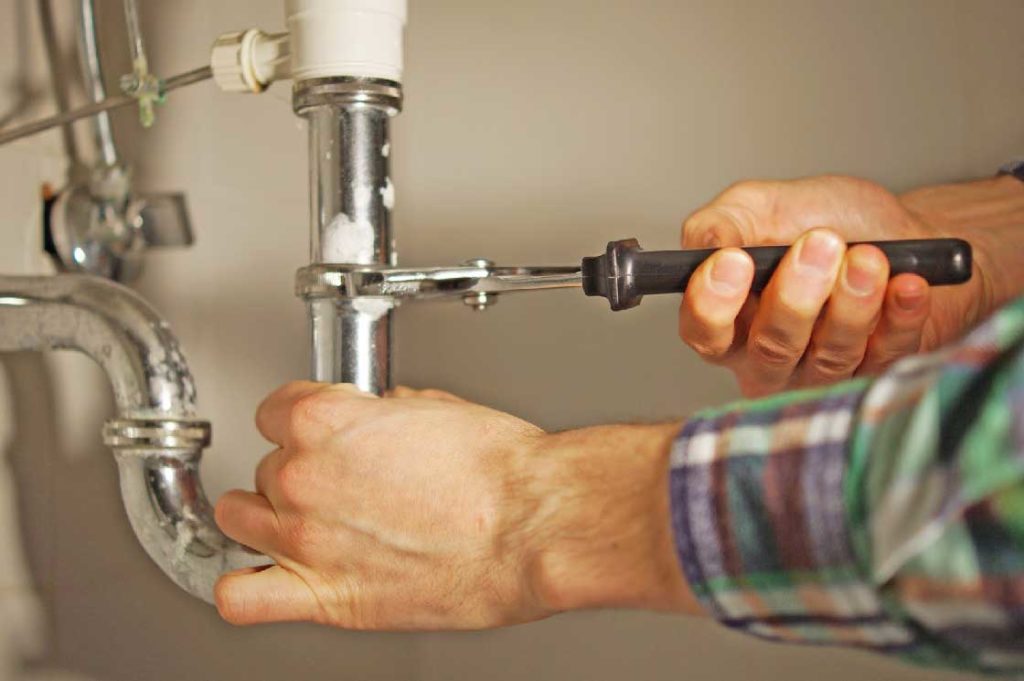Last Updated on July 17, 2023
Nov 12, 2020
How do you know if your field service operations are successful? Are you keeping a close eye on your KPIs and metrics?
Many field service professionals are not taking advantage of the available data and resources to track business success. If that sounds like you, it’s not too late to start measuring the performance of your field service operations to identify opportunities for improvement! Keeping better track of your metrics is a great start towards achieving your business goals.

If you’re just getting started with field service management metrics or you’re looking to refine the metrics you’re currently tracking, you’ve come to the right place. In this article, we’re covering some of the most important field service metrics you should be tracking for your field service business.
Keep in mind that every business is different and you may need to choose different field service metrics based on your particular business goals. However, this article will give you a good idea of the most commonly measured metrics to get you started on the path of metric-tracking success.
Customer Metrics
For businesses in the field service industry, customer metrics are essential for measuring the quality of your services and the success of your business.
Happy customers are the key to keeping your business afloat and expanding your customer base. However, when it comes to customer satisfaction, customers won’t always tell you when they’re dissatisfied with your company’s services. Though some customers may leave a review to give you some indication of customer satisfaction, this doesn’t give you the whole picture. The following are a few important key performance indicators to give you a more accurate idea of customer satisfaction with your services.
Customer Retention
What percentage of your customers return to your business on an ongoing basis?
This metric can be calculated with the following formula: ((E – N)/S) x 100%
-
E is the number of customers at the end of a time period
-
N is the number of new customers you added in that time period
-
S is the number of customers you started with for that time period
This formula will give you the percentage of customers that your company continues to do business with over a given period of time. This is a great metric for determining customer satisfaction because happy customers are more likely to return for repeat business!
Customer retention is important because acquiring new customers is much more expensive than retaining your existing customers. It’s essential to stay on top of this metric to ensure that you maintain a solid customer base.
Customer Churn
How many customers do you lose over time?
Customer churn is basically the inverse of customer retention. Customers may not return to your business for a variety of reasons but dissatisfaction with your services will definitely cause you to lose out on repeat business.
Even if your customer base is growing, a high rate of customer churn will hinder the growth of your business and cause you to spend more money on growing your customer base.
Customer Base Growth Rate
How much is your customer base growing?

This metric looks at the rate of growth of your customer base over a given period of time (often measured quarterly or annually).
While field service teams are typically not involved in the sales or marketing process, they can play an important role in the customer base growth rate through customer retention. As we previously discussed, customer retention is an essential aspect of maintaining a strong customer base so your business can grow and succeed.
The more customers you retain, the more efficiently your customer base will grow.
Service Metrics
A key aspect of keeping your customers satisfied is ensuring that your services meet their expectations. The following KPIs will help you understand whether your services could be the aspect driving customers away from your business.
Service Uptime/ Downtime
How often do your customers experience equipment or system failures?
Uptime refers to the percentage of time that your customers’ equipment/ systems are working properly, and downtime is the percentage of time that they’re not.
The longer your downtime, the more dissatisfied your customers are likely to be. Customers expect the equipment you provide to work properly, so when it doesn’t, it can have a major impact on customer satisfaction and retention. If equipment fails more often than it should, or when issues take a long time to be fixed, you’ve got a problem on your hands!
The longer your uptime, the happier your customers. You can improve your uptime through the following methods :
-
Improve your response time and send technicians as soon as possible when equipment issues arise
-
Move towards a preventative maintenance approach to your services
-
Review procedures to see if there is room for process improvement that could reduce equipment failures
Contract/ SLA Compliance
How often do the services you deliver stray from those outlined in your service level agreements?
To satisfy your customers, it’s important that you live up to the standards that you initially agreed upon. If your business rarely lives up to the level of service you agreed upon in your contract, it could negatively affect your customer retention.
This would also be a sign that you need to re-evaluate your field service systems to ensure that your service workers can better adhere to these contracts.
Efficiency Metrics
Efficiency metrics are fundamental to measuring the quality of your field services because they can really make or break both customer satisfaction and business costs. Let’s take a look at a few of the efficiency metrics that you should measure to ensure that your services and processes are as efficient as possible.
Mean Time to Service (Response Time)
How much time does it take your field service team to respond when your customers experience service downtime? Do you have a dispatching process in place for efficiency?
The mean time to service can be measured by looking at the average amount of time between the initial notification of a problem and a technician arriving on site.
If your service team is taking a significantly long time to resolve issues, your customers are more likely to lose faith in your organization. This makes it an important metric to measure when looking into the reasons behind customer churn.
Though low technician productivity could be a cause of poor response time, this is not always the case. Mean time to service can also increase due to technician shortages or scheduling issues.
Mean Time to Complete
How much time does it take your service team to complete an entire job cycle?

When measuring this metric, ensure that you include everything from the initial call to the completion of the job. Though some jobs or services may take longer than others, it’s important to understand the average time of all your jobs to get an idea of workflow inefficiencies.
In order to improve your mean time to complete, you will likely need to look at your processes and find inefficiencies in the workflow. What is stopping people from completing the job more efficiently?
The more you can tighten up your workflows, the more satisfied your customers will be.
First-Time Fix Rate
How often does your field service team complete a service or job on the first try, without having to return for repeat visits?
In an ideal world, you want to complete your jobs on the first visit so you can save valuable time for both your customers and your field service team. The more often your field service team has to return for repeat visits in a preventative maintenance contract scenario, the more money it will cost your business, and the less satisfied your customers will be.
Determining your first-time fix rate will help you understand your field service team’s productivity and whether you need to invest in more training for your technicians. Increasing your first-time fix rate will allow more time for your technicians to complete additional jobs to increase your business revenue and satisfy your customers.
Business Metrics
How do you determine if your business is successful and consistently growing? Here are a few metrics to consider.
Technician Utilization
How much time do your technicians spend on productive work?

Technician utilization involves comparing your technicians billable hours to their non-billable hours. The more time your technicians spend on doing productive work, the greater your business revenue.
Unnecessary travel time is a big factor that often reduces technician utilization. This reduces your overall business profitability and could mean that you need more technicians to complete all of the necessary work.
If your business is struggling with low utilization rates, it may be a sign that you need to improve your scheduling and dispatching processes.
Business Growth
How quickly are you growing your customer base/ increasing business revenue?
The business growth metric is similar to the customer base growth metric we previously discussed. The difference is it also looks at total business revenue to gain a wider understanding of the success of your business.
Any of the metrics discussed previously such as first-time fix rate, uptime, etc. can affect your business growth. This metric won’t give you a clear idea of where you went wrong (or right), but it will give you the big picture of where your business is headed.
Financial Metrics
Contract / Revenue Leakage
How frequently do your technicians complete work for free (that wasn’t covered by a contract)?
Contract leakage refers to the instances when technicians do work for customers without charging for it. This may be due to a misunderstanding regarding the work covered by a contract, either on behalf of the customer or the technician.
When customers are misinformed about the details of the contract, technicians may complete the work anyways to please the customer and promote customer satisfaction. Though this may satisfy your customers, it wastes time that could have been spent on other work and therefore adds to business costs.
Contract leakage can be avoided by providing technicians with clear and accurate information about what work is included in the contracts. Improving their access to this information will also help them to better inform customers about contract parameters.
Job Profitability
How much money do you make from each of your jobs? Are your jobs making money or losing it?

If you don’t keep a keen eye on the profitability of each of your jobs, you could actually end up losing money. It’s important to ensure that each of your jobs are contributing to your bottom line.
Ensure you have a standardized system in place to keep track of all expenses and billable hours/ non-billable hours to ensure that you are making enough money off each of your jobs. This will give you a better idea of where you need to maximize profitability to keep your business sustainable.
Jonas Construction Solutions is Here to Help!
Are you a service manager looking to keep better track of these metrics to improve the service delivery and service processes of your field service division? Jonas Construction Software is here to help!
Enterprise Field Management for Service Managers is part of our all-in-one solution that helps subcontractors who have a service division run more efficiently and effectively. This solution makes it easy to keep track of the metrics discussed in this article and gain real-time access to insights on your business performance such as productivity and technician utilization.
Not only does our software make it easier to access these metrics, but it also helps you improve these metrics! Our Field Service Management software makes it easy to modify technician schedules and provide them with real-time access to uploaded documents, and work orders. This will allow you to reduce contract misunderstanding and wasted time driving between the field and the office.
Contact us today to find out how we can help you save time and money, and improve your metrics tracking and customer satisfaction with the Jonas Field Management Software solution .





